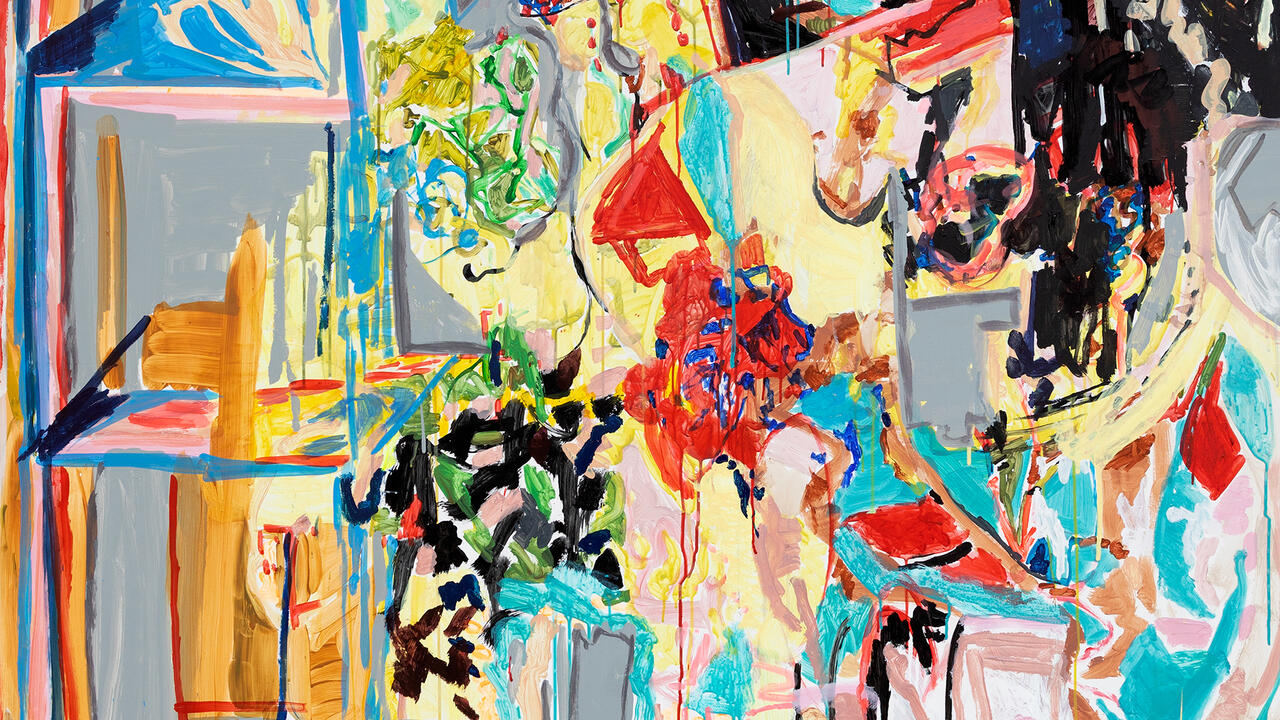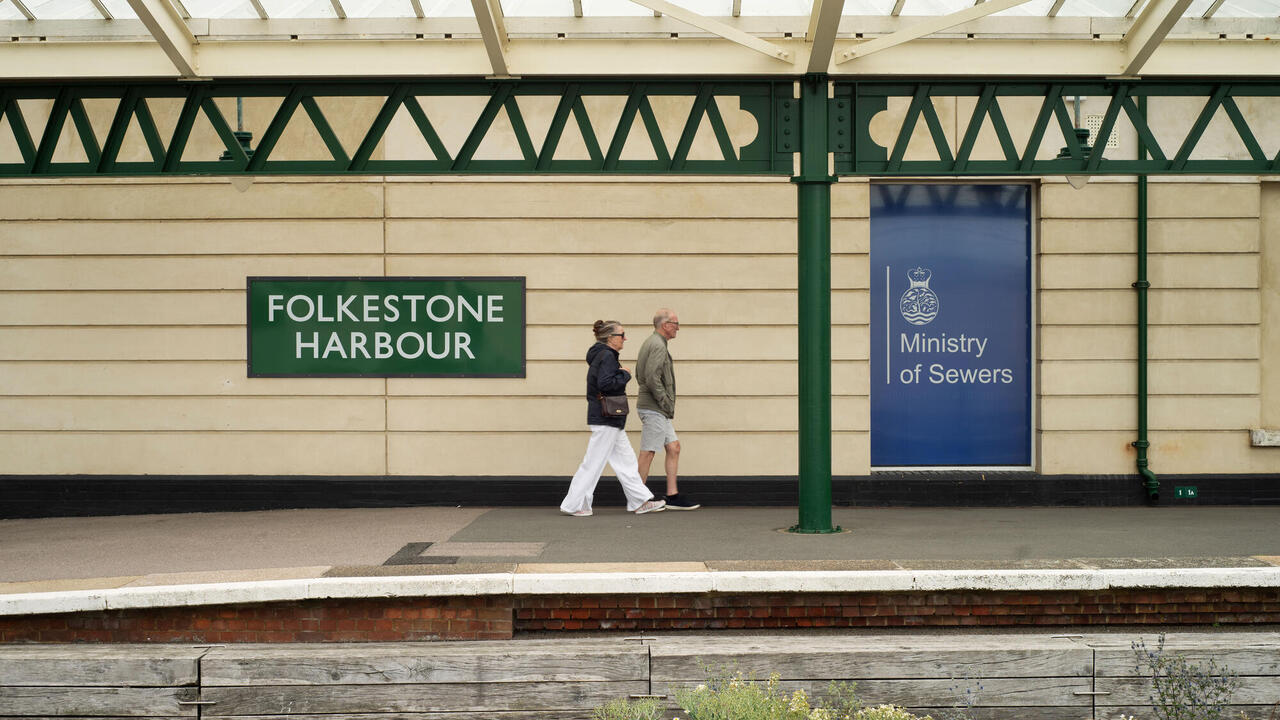Claire Barclay
Tramway, Glasgow, UK
Tramway, Glasgow, UK

The first thing that struck me as I entered Tramway’s vast main gallery space was the smell. Evocative rather than unpleasant, it was the odor of the factory and workshop, of engine oil and machinery, grease and metal, precision engineering and brute industrial force. There were more odours of industry as I walked round this former tram shed, navigating a series of eight installations (Yield Point, 2017). Consisting of fabricated objects that foreground the materials and processes of mechanization, each element at the same time betrays its lack of utility, form hinting at but not delivering any discernible function.

Claire Barclay’s carefully configured sculptural arrangements occupy the space with a mix of menace and forlornness. They are made from, amongst other things, steel and cast-concrete, machined aluminium and rubber, brass mesh and white ceramic, canvas and printed fabric – practical, purposeful materials born of the industrial age. These works appear robust and reliable yet, as suggested by the exhibition’s title – in mechanical engineering, a ‘yield point’ is the moment at which a solid material loses its elasticity and becomes permanently deformed – there is tension and uncertainty, too. Drama fills the gallery. Grease is smeared on metal, oil soaks into suede and black thread, and the smells of the factory floor are complemented by the colours of the same: bright orange powder-coated steel, jet-black rubber drive belts, the silver sheen of aluminium, roughly stitched mustard-yellow canvas.

The forensic focus on materials and their ability to evoke memory and emotion is a constant in Barclay’s practice. So, too, is the importance of process in her work: these installations, like those in previous shows, were created in-situ, with the gallery space acting as a temporary studio in the lead-up to the exhibition’s opening. Yield Point responds to Tramway’s late-Victorian industrial architecture and can, in part, be seen as continuing the artist’s dialogue with her home city’s manufacturing history. Her commission for last year’s Glasgow International, Bright Bodies (2016), was installed in the part-derelict Kelvin Hall – host to the 1951 Festival of Britain’s Exhibition of Industrial Power and for many years the home of a popular circus.

Yet, while Bright Bodies referenced the decline of traditional industries and the cultural and societal changes associated with this, Yield Point – though much larger in scale – is more intimate in tone. The tension here seems to be between the hardness of mechanization – its repetition and exactness – and the vulnerability, the waywardness, of human behaviour, of flesh and bone. In oblique ways, the human body exerts a kind of ghostly presence throughout the exhibition. A grouping of three interlinked cage-like steel structures in the centre of the gallery calls to mind workplace lockers, stripped back to their frames and peppered with welded-on metal prongs that point slightly upwards, like oversized coat pegs. Elsewhere, cast-concrete ‘sinks’ have been filled with now-set liquid soap, evoking scenes of grime being scrubbed from hands at the end of a factory shift. More menacingly, smooth, flowing shapes cut from pinky-orange rubber hang on hooks like flayed skin.

These hints of the human form suggest industrial workers that both facilitate and disrupt the manufacturing process: the oil and poison in the industrial machine. While mechanization in all its forms can dehumanize and desensitize, the message of Yield Point seems, ultimately, to be an optimistic one – that the point of no return is yet to be reached and that the human spirit is not easily broken.





















